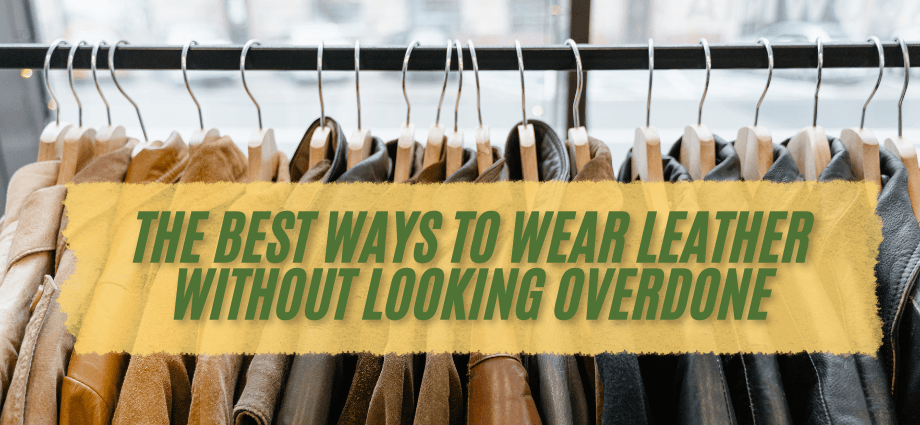When hot weather arrives, choosing the right fabric to wear is important for comfort. Certain fabrics can help you stay cool, while others can make you feel hot and uncomfortable. In this article, we will explore the best fabrics for hot weather and why they are ideal for keeping cool.
Key Factors to Consider in Hot Weather Fabrics
When selecting clothes for hot weather, several factors play a role in how well they will keep you cool. These include breathability, lightweight materials, and protection from the sun.
- Breathability and Airflow:
Fabrics that breathe well allow air to flow freely through them. This helps cool down your body when you sweat. Breathable fabrics also help reduce the feeling of being sticky and uncomfortable. - Lightweight Materials:
Light fabrics don’t trap as much heat. They let your body release heat instead of holding it in. Lightweight materials are important for staying comfortable in the heat. - UV Protection:
Some fabrics naturally block UV rays from the sun, helping to protect your skin from harmful effects. UV protection is important in hot weather, especially if you are spending a lot of time outside.
Top Fabrics for Hot Weather

There are several fabrics that are ideal for wearing in hot weather. These materials are breathable, lightweight, and comfortable.
Cotton
Cotton is one of the most popular fabrics for summer. It is soft, lightweight, and breathable. Cotton allows air to flow through it, which keeps you cool. Cotton also absorbs sweat, helping your skin stay dry. However, cotton can absorb too much moisture in humid weather, which may make it feel heavy and uncomfortable after a while.
- Pros: Soft, breathable, absorbent.
- Cons: Can become heavy when wet, wrinkles easily.
Linen
Linen is another great fabric for hot weather. It is made from the flax plant and is known for its ability to keep you cool. Linen is very breathable and lightweight, allowing air to move easily. It also absorbs moisture well, making it great for hot and humid conditions. However, linen wrinkles easily, so it may need more care to look neat.
- Pros: Highly breathable, moisture-wicking, lightweight.
- Cons: Wrinkles quickly, can feel stiff at first.
Bamboo
Bamboo fabric is becoming more popular in hot weather. It is a natural fabric that is soft and cool to the touch. Bamboo fibers are highly breathable and moisture-wicking, meaning they can draw moisture away from your skin. Bamboo fabric is also eco-friendly, making it a good choice for those who want sustainable options.
- Pros: Soft, eco-friendly, moisture-wicking, breathable.
- Cons: May be more expensive than other fabrics.
Rayon
Rayon is made from natural fibers but is processed with chemicals. It is lightweight and has a soft feel, which makes it a good choice for hot weather. Rayon is breathable and helps keep you cool. However, it can shrink or lose its shape when washed improperly, so it needs to be handled carefully.
- Pros: Lightweight, breathable, smooth texture.
- Cons: Can shrink or lose shape after washing, not as durable as other fabrics.
Fabrics to Avoid in Hot Weather
Not all fabrics are good choices for hot weather. Some materials can trap heat and make you feel hot and sweaty. Here are a few fabrics to avoid when the weather is hot.
Polyester and Other Synthetics
Polyester is a synthetic fabric that does not breathe well. It traps heat and moisture, which can make you feel very hot and uncomfortable. Polyester also doesn’t allow air to flow through, making it a poor choice for summer clothing.
- Why avoid polyester: Traps heat, doesn’t breathe well, can make you sweat more.
Wool
Wool is warm and insulating, making it better suited for cooler weather. It can make you feel hot and sweaty in the heat. Wool also absorbs moisture, which can lead to discomfort in humid conditions. For these reasons, wool is not recommended for hot weather.
- Why avoid wool: Traps heat, absorbs moisture, can feel heavy in warm weather.
Nylon
Like polyester, nylon is another synthetic fabric that doesn’t breathe well. It is also not very moisture-wicking, which means it can trap sweat against your skin. Nylon clothing can feel sticky and uncomfortable on hot days.
- Why avoid nylon: Traps sweat, doesn’t breathe, can feel sticky.
Tips for Choosing Fabrics in Extreme Heat
When the weather is extremely hot, it’s important to choose fabrics that will keep you cool and comfortable. Here are a few tips to help you select the right fabric for extreme heat:
- Look for lightweight fabrics: Fabrics like cotton, linen, and rayon are lightweight and will help your body release heat rather than trap it.
- Choose light-colored clothing: Dark colors absorb heat, making you feel warmer. Light-colored fabrics, on the other hand, reflect sunlight and keep you cooler. White, beige, or pastel colors are great choices for hot weather.
- Pick moisture-wicking fabrics: Fabrics that wick moisture away from your skin will help keep you dry. This is especially helpful if you are active in hot weather.
- Avoid tight-fitting clothes: Tight clothing can prevent airflow, making you feel hotter. Loose-fitting clothes allow air to circulate better, helping you stay cool.
- Consider your activity: If you’re going to be outside in extreme heat, choose fabrics with UV protection. Some fabrics offer a natural shield from the sun, reducing your exposure to harmful UV rays.
Conclusion
In hot weather, choosing the right fabric is essential for comfort and protection. Fabrics like cotton, linen, bamboo, and rayon are great choices because they are breathable, lightweight, and moisture-wicking. Avoid materials like polyester, wool, and nylon, which can trap heat and make you feel uncomfortable. When selecting fabrics, also consider factors like fabric color, moisture-wicking ability, and UV protection. With the right clothing, you can enjoy hot weather while staying cool and comfortable.




